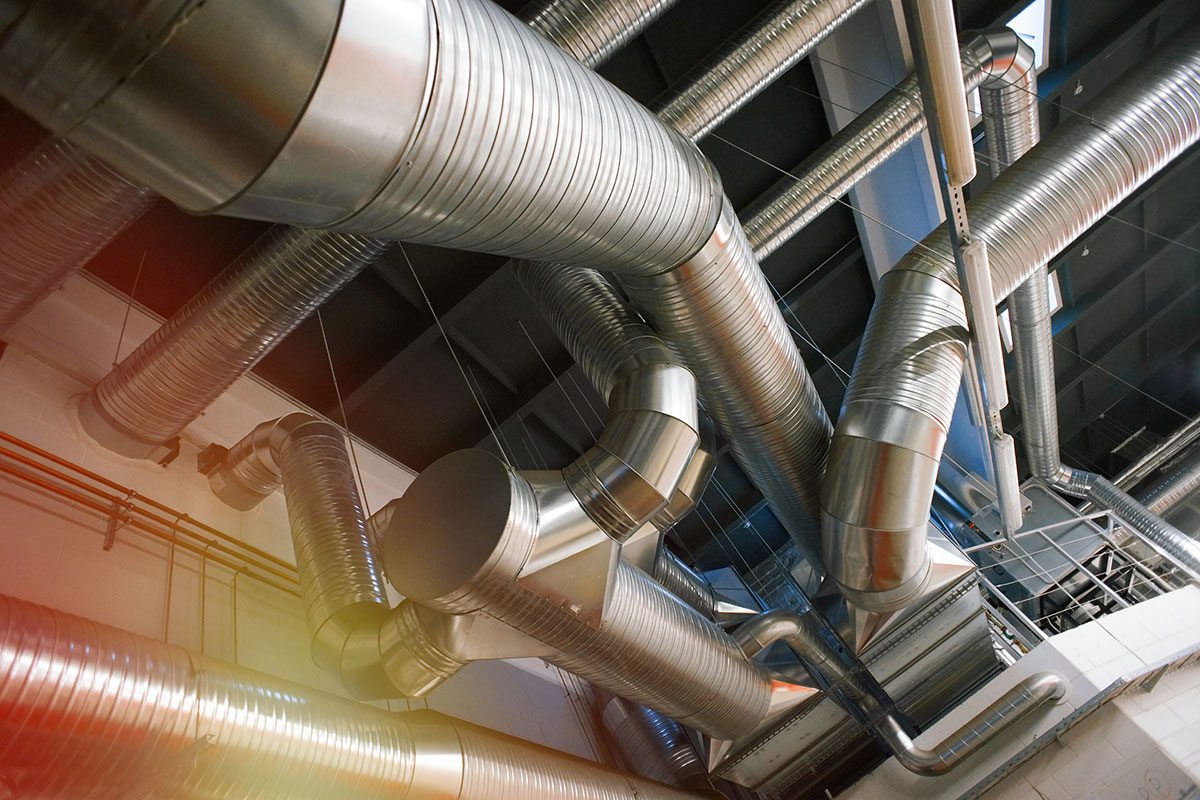Deep Dive into Commercial HVAC Ductwork – And Why It’s Important
Let’s talk about ductwork! Commercial HVAC systems can have a variety of different materials, each with their own benefits and applications.
Since a commercial HVAC system is designed to heat and cool commercial buildings but also maintain a good indoor air quality and provide comfort to a building, it’s worth taking a look at the different types of ductworks available to see what might be best for your commercial building.
Types of HVAC Ducts
There are several types of HVAC ducts used in commercial buildings, each designed to meet specific requirements. The most common types of commercial HVAC ducts are:
Sheet Metal Commercial HVAC Ducts
These ducts are made from galvanized steel or aluminum sheets. These are the most popular type of ducts used in commercial buildings. They are durable, fire-resistant, and can be customized to fit any building layout.
Aluminum is lightweight and corrosion-resistant, so it’s ideal for areas with high humidity. Sheet metal commercial HVAC ducts are easy to access for cleaning and maintenance, which can extend the life of the ducts and improve the efficiency of the HVAC system.
Fiberglass Commercial HVAC Ducts
Made from layers of fiberglass that are compressed and sealed together, these commercial HVAC ducts are lightweight, easy to install, and provide good insulation. Fiberglass ducts are great for commercial buildings where energy efficiency is a top priority.
Another benefit to these types of HVAC ducts is that they are designed to prevent the growth of mold, bacteria, and other allergens, which helps improve indoor air quality.
Flexible Commercial HVAC Ducts
These types of ducts have a flexible plastic inner liner that is covered with insulation and an outer jacket. They are easy to install and are often used in buildings that have tight bends and corners like historic structures and smaller buildings.
Flexible HVAC ducts have fewer joints than rigid ducts, which means there is less potential for air leakage. Additionally, they are designed to absorb sound, which is important in buildings where sound from the HVAC would be a problem.
Fabric Commercial HVAC Ducts
Made from permeable fabric and designed to diffuse air more evenly throughout a space, these ducts are lightweight, easy to use, and are best suited for large commercial spaces. These newer types of commercial HVAC ducts, like sheet metal ducts, provide:
- easy access for cleaning and maintenance
- help improve indoor air quality because of their resistance to mold, bacteria, and allergens
- and they come in a variety of colors and patterns.
This makes this special type of ducting aesthetically pleasing and can add to the overall design of the building.
Sizing Commercial HVAC Ducts
Sizing commercial HVAC ducts is critical to ensuring that the system delivers conditioned air efficiently and effectively throughout the building. If ducts are too small, it can cause the air to be unevenly distributed and result in higher energy costs.
Oversized ducts can lead to less airflow, and a decline in the system’s efficiency. The size of the ducts necessary is determined by the heating and cooling load of the building, the type of HVAC system installed, and the size of the space.
Installation of Commercial HVAC Ducts
Installation of HVAC ducts is a complex process that requires careful planning and execution to ensure that the system operates efficiently and safely. The installation process involves several steps, including:
- Planning: The first step in the installation process is to develop a plan that outlines the type of ducts to be used, their size, and the location of the air handling unit.
- Fabrication: Once the plan is developed, the ducts are fabricated according to the specifications and the needs of the space.
- Installation: The ducts are then installed in the building, connecting them to the air handling unit, registers, and grills.
- Insulation: The ducts are insulated to prevent heat loss or gain and to minimize noise transmission.
- Testing: After the installation is complete, the system is tested to ensure that it operates efficiently and effectively.
Obviously, it’s important to work with a licensed commercial HVAC professional to ensure that your ductwork is installed properly.
Commercial HVAC ducts are an integral part of HVAC systems and play a crucial role in maintaining a healthy and comfortable indoor environment in commercial buildings.
Understanding the types of ducts used, materials, sizing, and installation process is essential for building owners and HVAC professionals to ensure that the system operates efficiently and effectively.
By investing in an energy-efficient HVAC system and regular maintenance, commercial building owners can save money, reduce energy costs, and contribute to a sustainable environment.
Need help with your commercial HVAC system? Contact us today! We’ve been the trusted family owned and operated commercial HVAC go to for the DMV since 1990!


